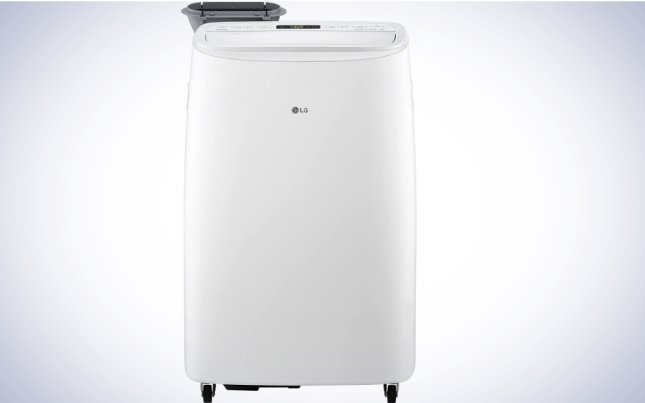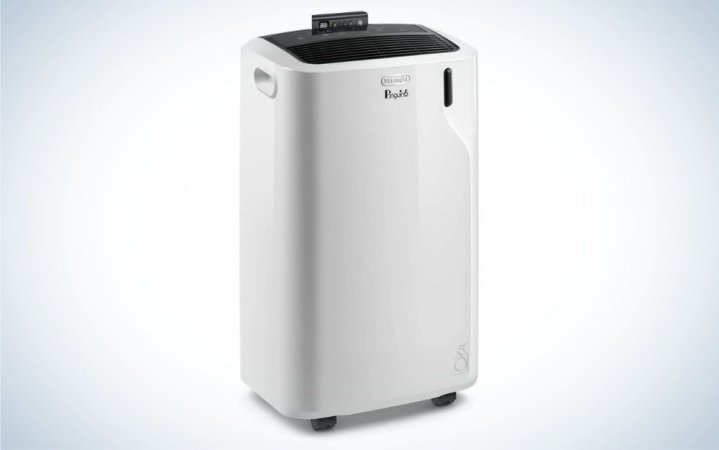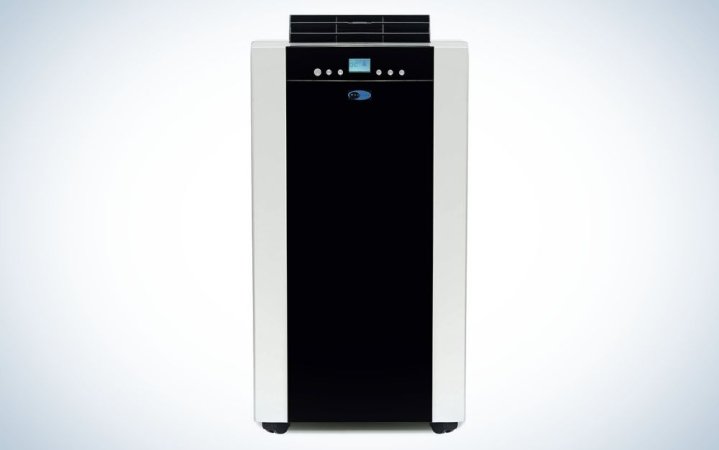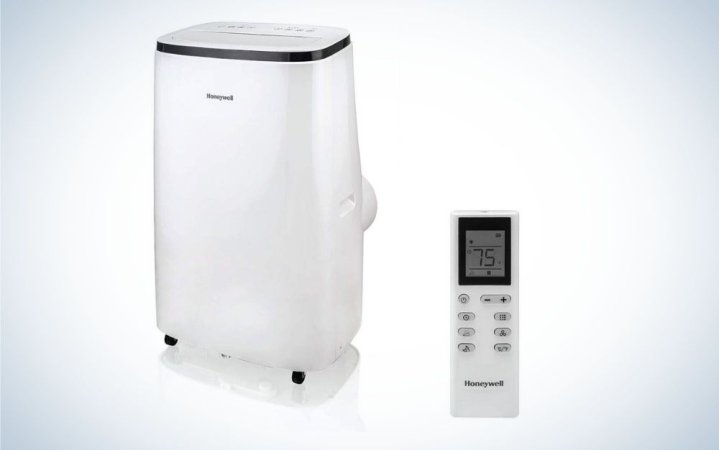We may earn revenue from the products available on this page and participate in affiliate programs. Learn more ›
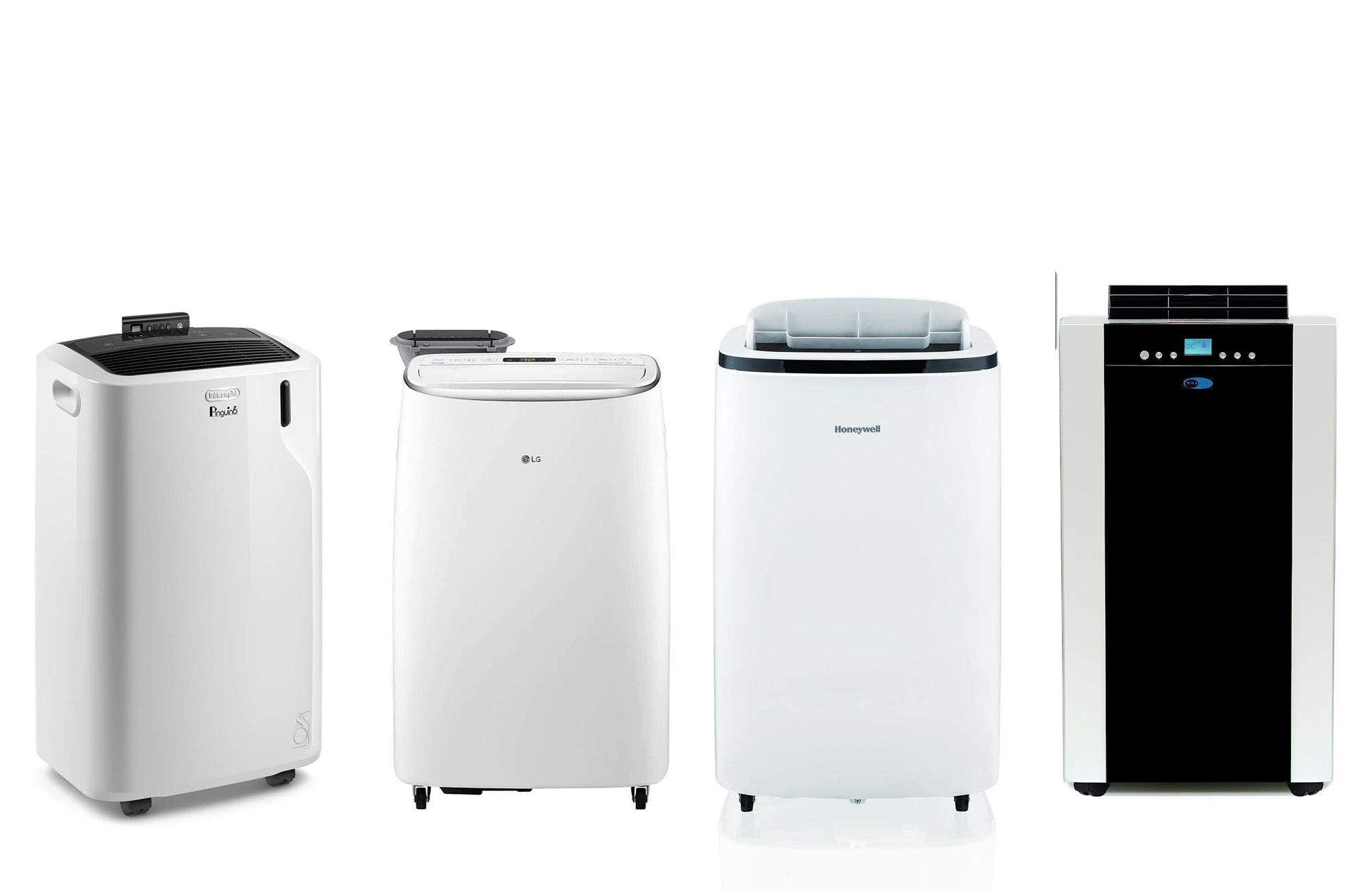
An easily portable air conditioner is one of the unsung heroes of the appliance world. For many people who can’t install a window unit or that have a system that’s controlled by the (seemingly random) hand of a building super or management company, a moveable air conditioner let you take back control of your body temperature. The best thing about a compact portable unit is that it does what it says: provides all the frigid satisfaction of an AC but requires zero installation; plus, you can reposition it from room to room. The downside: Most portable air conditioners are not cheap, sometimes they can be noisy, they’re most effective in small spaces, and they likely will not compare to central air or window units. Having said all that, if you live someplace where the heat gets unbearable and actually affects your quality of life—you can’t sleep, you can’t get comfortable, you have to take constant cold showers—the best portable air conditioners are a wise investment that’ll serve you for years to come.
- Best overall: LG DUAL Inverter Smart Air Conditioner
- Best for small rooms: BLACK+DECKER BPACT08WT Portable Air Conditioner
- Best quiet: De’Longhi PACEM370 WH Penguino Portable Air Conditioner
- Best dual-hose: Whynter ARC-14S Dual-Hose Portable Air Conditioner
- Best budget: Honeywell HJ5CESWK0
How we chose the best portable air conditioners
Popular Science has expertise in vetting home appliances and explaining the technology behind how they work. Except for a couple people who are van-lifers, we live in traditional dwellings—apartments to single-family homes—and like them to be comfortable, so we’re always trying out new gear. In making our recommendations for the best portable air conditioners, we considered the portable AC units available from leading brands, such as LG, Honeywell, and Black+Decker. We also weighed the design of these mini air conditioners, their reach, how energy-efficient they are, how easy they are to install and operate, longevity, and cost.
The best portable air conditioners: Reviews & Recommendations
Using a portable air conditioner as opposed to central AC can help you save energy and money. That said, these models vary in power, coverage area, functionality, and price. Here are our picks to help you keep your cool when picking the best portable air conditioners.
Best overall: LG DUAL Inverter Smart Air Conditioner
Worth the Splurge
Specs
- Dimensions: 19.41 inches D x 18.11 inches W x 30.43 inches H
- BTUs: 10,000
- Power: Corded electric
Pros
- Powerful
- Quiet
- Works with smart home assistants
Cons
- Expensive
The LG DUAL Inverter Smart Air Conditioner uses the latest technology to allow you to control the climate in your home, making it our best overall pick. An oscillating air vent in this 10,000 BTU LG portable air conditioner circulates cool air efficiently, and dual-inverter technology is powerful but not loud (it operates at 44 decibels). Its dual inverter is not only quiet, but cuts down on the air conditioner’s energy usage by up to 40% compared with other air conditioners.
An installation kit and hose make it easy to set up, and it won’t take up much room at 19.41 inches by 18.11 inches by 30.43 inches. A trio of modes—Cool, Fan, and Dry—gives you the option of controlling humidity in addition to temp. Smart home-assistant compatibility (Alexa and Hey Google) is a cool feature when things heat up, and an app (iOS and Android) lets you control the portable AC with your phone. These smart features—along with this air conditioner’s energy efficiency and quiet operation—make it hard to beat.
Best for small rooms: BLACK+DECKER BPACT08WT Air Conditioner
Good for Big Spaces
Specs
- Dimensions: 16.5 inches D x 26 inches W x 11.5 inches H
- BTUs: 8,000
- Power: Corded electric
Pros
- Easy to set up
- Filter you can clean
- Energy-saving timer
Cons
- Not as powerful as other models
If you’re for a small portable air conditioner to cool without wasting energy, the Black+Decker portable air conditioner is a solid choice. Designed for small rooms under 450 square feet (about 15 feet by 20 feet), this 8,000-BTU portable air conditioner has an adjustable fan speed that can cool down to 6 degrees Fahrenheit. It’s easy to set up and features an LED display and energy-saving timer. You can choose between cool, fan, and dehumidifying modes. And when you’re ready for bed, it goes extra quiet in sleep mode.
Best quiet: De’Longhi PACEM370 WH Penguino
Preassembled Wheels for Ease
Specs
- Dimensions: 13.6 inches D x 16.7 inches W x 27.6 inches H
- BTUs: 11,500
- Power: Corded electric and two AAA batteries
Pros
- Quiet
- Optional white noise feature
- Easy to move
Cons
- Some reviewers say it’s hard to return
Cooling your living space can help you get to sleep on hot nights, but not if the unit is loud. The De’Longhi PACEM370 WH Penguino can take care of both. This 11,000 BTU comes with an optional quiet night mode that doubles as white noise for all the insomniacs out there. It also features a remote control, energy efficiency, multiple settings (including quiet), and an easily washable filter. Operating at about 53 decibels, this unit covers up to 500 square feet and is designed with casters that make it easy to move it from room to room.
Best dual-hose: Whynter ARC-14S Dual-Hose Air Conditioner
Cools Quickly
Specs
- Dimensions: 16 inches D x 19 inches W x 35.5 inches H
- BTUs: 14,000
- Power: Corded electric
Pros
- Acts as a dehumidifier as well
- Energy Star-certified
- Doesn’t use chlorofluorocarbons
Cons
- Heavy
- Some users say the unit doesn’t cool the air significantly
If you’re looking for a unit that cools fast and cleans your air to boot, consider the Whynter ARC-14S Dual-Hose Portable Air Conditioner. Its dual-hose design allows the unit to recycle, cool, and dehumidify up to 71 pints of air per day. This portable AC operates at a powerful 14,000 BTU, and you can choose from three modes: air conditioner, fan, and dehumidifier.
For people interested in sustainability, this dual-hose portable air conditioner is designed with a carbon filter that helps air quality. The unit’s R-32 refrigerant is free of potentially toxic chlorofluorocarbons, and it’s also Energy Star-certified, with a maximum power consumption of 1,300 watts.
Best budget: Honeywell HJ5CESWK0
Most Bang for Buck
Specs
- Dimensions: 18.9 inches D x 15.4 inches W x 30.7 inches H
- BTUs: 10,000
- Power: Corded electric
Pros
- Budget-friendly
- Energy-saving timer
- Comes with kit
Cons
- Noisy
- Some users say the tube does not connect correctly
This portable model from Honeywell is used, making it a great pick if you’re looking for a cheap air conditioner. This model is designed to cool rooms up to 450 square feet and comes with a window kit for easy installation of the tube. It comes with a washable filter (to weed out pet hair, dander, and dust) that extends the life of this 10,000-BTU option (just run the filter under the tap to clean it). You get three fan speeds, sleep and auto-wind modes, and a 24-hour energy-saving timer. And a remote is included.
Things to consider buying the best portable air conditioners
With electronics and appliances, including small portable air conditioners, people tend to fall in love with one or two brands and outfit their homes with as many of that company’s gadgets as possible. If you’re a brand-loyal gearhead, you’re in luck: Many of the biggest names in tech, from Black+Decker to Whynter, have some of the best portable air conditioners around. Here are the factors to consider when making your decision.
BTUs
BTUs, short for British Thermal Units, quantify the energy needed to remove heat from the air in one hour. An air conditioner should have 20 BTUs for every square foot of the area you are looking to cool, according to Consumer Reports. While it may be tempting to buy a unit with the highest BTUs, keep in mind the space that you’re looking to cool and promoting energy efficiency and savings.
Energy efficiency
Cooling your home by targeting certain spaces as opposed to a whole-home system should help you to save on your electricity bills. Energy Star recommends seeking air conditioners that allow you to schedule cycles, turn the appliance off remotely, and track your energy usage. Several models also come with 24-hour timers that allow you to schedule when the unit is on.
Installation
Many portable air conditioners are designed with an exhaust hose or two that goes through a window to release hot air. Most come with window installation kits that include an adapter and bracket, but you’ll want to ensure that the kit will fit the window in your home before making a purchase. If you don’t have a window next to an outlet, you can also potentially vent through the ceiling or chimney, but that could require the assistance of a professional.
Types of systems
Single-hose systems draw hot air in from a room and then expel it through an exhaust hose, typically through a window. Dual-hose systems are designed with both and exhaust hose and an intake hose that cools down the air within the machine, generally resulting in more cooling power and energy efficiency.
Brand
A quick review of brands and what they represent: LG, which has been around since 1958, promises “innovation for a better life.” Honeywell, founded in the Midwest at the turn of the 20th century, is best known for thermostats but has also dipped a toe in aerospace engineering and PPE manufacturing. Italian brand De’Longhi probably makes your favorite coffee maker or toaster oven, and Whynter is, as you could probably guess, all about keeping things the perfect temp, whether that’s with outdoor fridges, portable freezers, cigar humidors, intelligent ovens, or ice cream makers. Black+Decker is one of the most trusted names in kitchen appliances, in addition to making portable ACs. (And there are, of course, loads of other manufacturers that make portable ACs, like Toshiba, Haier, Hisense, Frigidaire, and GE.)
FAQs
Whether portable air conditioners work well depends on your definition of success. If you buy a portable AC that is made to cool down a room that’s 150 square feet and your room is 700 square feet, then you’ll be disappointed. However, if you’re used to going without AC in the summer and you purchase a model that’s appropriate for your space, it’s not hyperbolic to say that the best portable AC will truly change your life. Some people say they’re better than a fan but not as effective as a window unit, so calibrate your expectations.
Again, whether a portable AC is worth buying depends on what you’re looking for. If you live somewhere that gets oppressively hot and your options are no AC at all or a portable model, then yes, it’s worth buying. If you’re just looking for something to tide you over until, say, your window unit is fixed or you already have central air installed, then probably not. Portable ACs are not inexpensive (though there are relatively cheap portable air conditioner options for the smallest spaces). They’re best for people looking to cool down relatively small spaces and get some relief in an otherwise airless room. Think of it this way: If you use a fan and that seems to do the trick, then you probably don’t need to drop that much cash on a portable AC.
How many watts a portable air conditioner uses varies. The models listed here use a minimum of 950 watts and increase from there. Though portable ACs are not intrinsically energy-efficient, your electric bill will depend on how often you use it/keep it turned on and what mode you have it on (e.g., full blast vs. sleep mode). If you are strategic, you can help cut your electric bill by using a portable AC. For example, instead of installing window units in every room, you simply move your unit around the house, saving you money. (Venting the hoses into the windows every time you move it could get tiresome, though.) Suppose you already have an AC and want a portable model as a supplement. In that case, you can save money that way too: Keep the thermostat higher than you typically would and use the portable only in the rooms you use, ignoring the empty ones.
Final thoughts on buying the best portable air conditioners
- Best overall: LG DUAL Inverter Smart Air Conditioner
- Best for small rooms: Honeywell HJ5CESWK0
- Best quiet: De’Longhi PACEM370 WH Penguino Portable Air Conditioner
- Best dual-hose: Whynter ARC-14S Dual-Hose Portable Air Conditioner
- Best budget: BLACK+DECKER BPACT08WT Portable Air Conditioner
Take a hard look at your current cooling situation and your electric bill. If you live somewhere sweltering and have no AC, you live somewhere with adequate air but are looking to lower your bill, or you live somewhere so small that one portable unit will get the job done, investing in the best portable air conditioner can be pretty cost-effective. A small portable air conditioner could be your hot-weather game changer.
